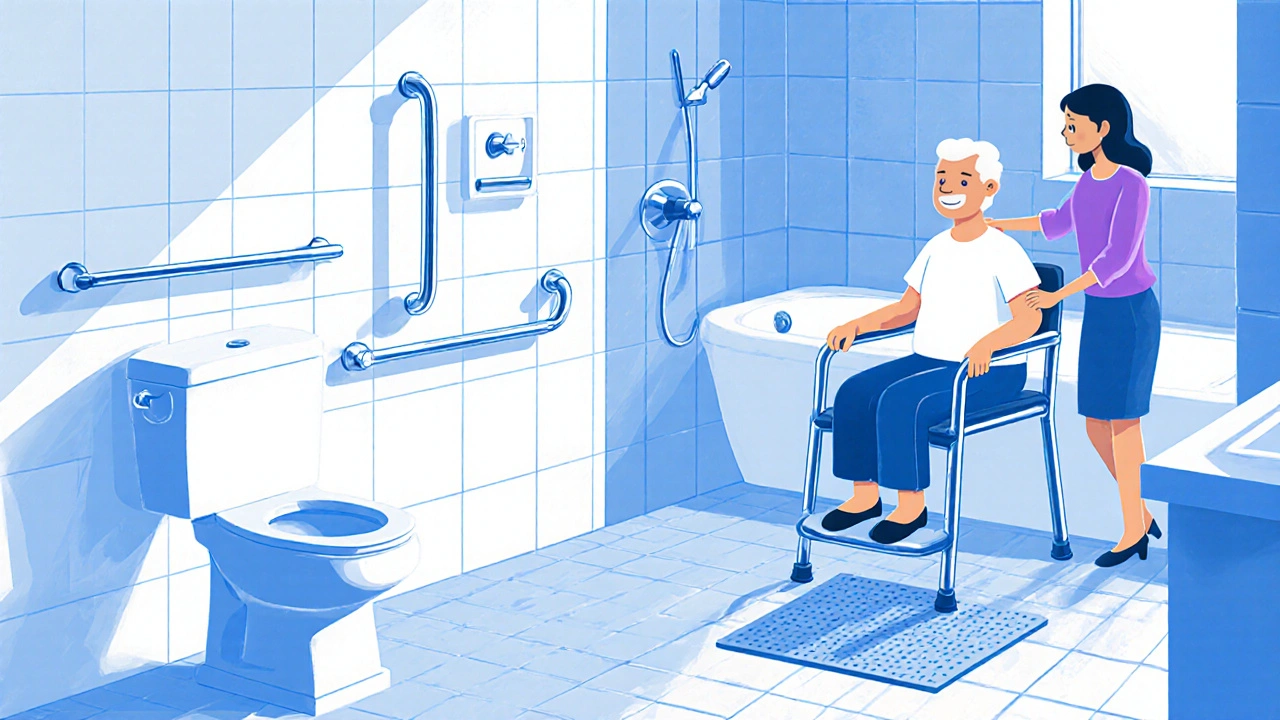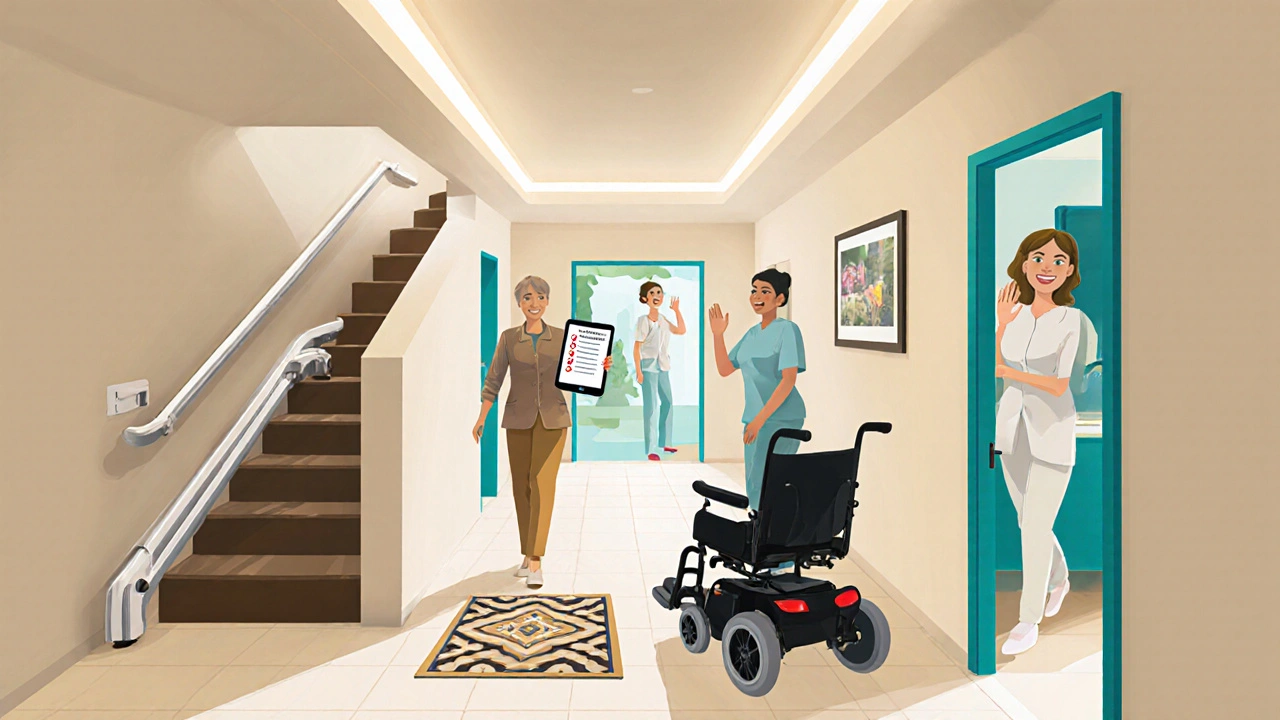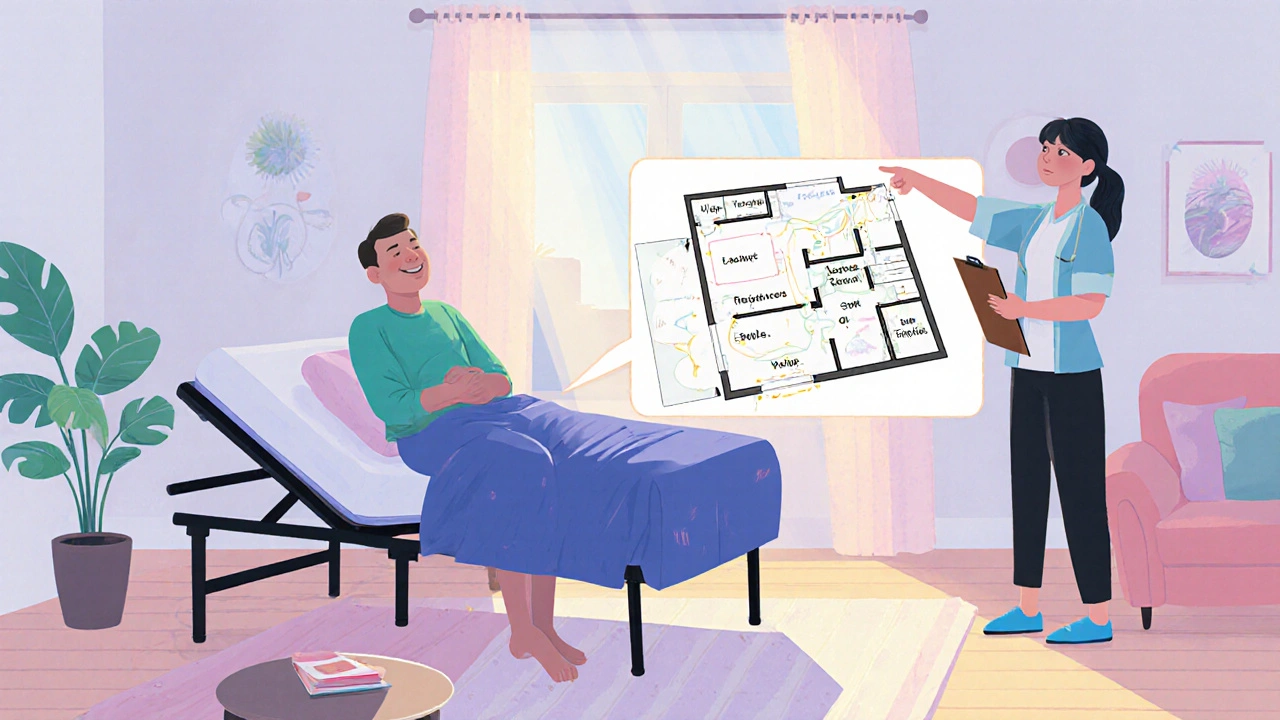Mobility Aid Selector
Find Your Right Mobility Aid
This tool helps you determine the most appropriate mobility aid based on your specific needs and home environment.
Recommended Mobility Aid
Important Note
Always consult with a healthcare professional or occupational therapist before selecting mobility aids. This tool provides general guidance only.
When someone experiences subarachnoid hemorrhage, it is a type of stroke caused by bleeding into the space between the brain and the thin membranes that cover it, the aftermath often includes fatigue, balance issues, and reduced mobility. Adjusting the home to match those new needs can mean the difference between staying independent and constantly fearing a fall.
What Is Subarachnoid Hemorrhage?
In most cases the bleed starts from an aneurysm that has ruptured. The sudden rush of blood into the subarachnoid space raises pressure, irritates brain tissue, and can trigger a cascade of symptoms-headache, confusion, and, crucially for our focus, weakness or loss of coordination. Compared with other types of stroke, recovery can be slower because the brain has to clear the blood and heal the damaged vessels.
Why Home Modifications Matter
After a SAH, even a simple step can feel like a mountain. Balance problems increase the risk of falls, and fatigue means daily chores become exhausting. Modifying the living space addresses two core goals: reduce hazards and create a smoother flow for mobility aids. The result is a safer environment that supports both the survivor and the caregiver.
Prioritizing Changes - A Quick Checklist
- Assess high‑traffic routes for obstacles.
- Install grab bars in the bathroom and near the bed.
- Choose a wheelchair or other mobility aid that matches the user’s strength.
- Consider a stair lift if stairs are unavoidable.
- Improve lighting to compensate for visual fatigue.
Bedroom Adjustments
The bedroom should be the easiest place to get in and out of bed. A adjustable bed frame allows the head and feet to be raised, reducing strain when sitting up. Keep a night‑stand at waist height with essential meds within reach. If the room is on a different floor from the bathroom, a small portable wheelchair or a sturdy recliner nearby cuts the number of trips required.

Bathroom Safety
The bathroom is the top spot for falls. Install grab bars beside the toilet, inside the shower, and next to the tub. A shower chair lets the survivor sit while washing, reducing the need to balance on slippery surfaces. Replace round knobs with lever handles for easier operation. Non‑slip matting on the floor adds an extra layer of grip.
Living Area and Hallways
Clear pathways of loose rugs, cords, and furniture that forces a tight turn. If space allows, widen doorways to at least 32 inches to accommodate a standard wheelchair. Add a stair lift if the home has multiple levels; it’s a worthwhile investment that maintains independence. For smaller budgets, a sturdy railing or a portable handrail can be installed on steep steps.
Kitchen Tweaks
Standing for long periods can quickly tire a SAH survivor. Move frequently used items-plates, mugs, utensils-to lower cabinets so they’re reachable from a seated position. Use pull‑out shelves or lazy Susans to avoid deep bends. A countertop extension with a cut‑away edge creates a comfortable space for a wheelchair‑compatible workspace.
Outdoor Access
Entryways should have level thresholds or a small ramp. Install bright, weather‑proof lighting on pathways and grab bars on any exterior steps. A covered seating area provides a safe place to rest without exposure to heat or rain, which can exacerbate fatigue.

Choosing the Right Mobility Aid
Not every survivor needs a full‑size wheelchair. Evaluate strength, balance, and the layout of the home. Below is a quick comparison to help decide which aid fits best.
| Aid | Weight Capacity | Typical Cost (AU$) | Best For |
|---|---|---|---|
| Manual Wheelchair | 250 lb (113 kg) | 1,200‑2,000 | Limited upper‑body strength, flat terrain |
| Power Wheelchair | 300 lb (136 kg) | 8,000‑12,000 | Reduced hand strength, multi‑level homes |
| Walker with Seat | 200 lb (91 kg) | 150‑300 | Short distances, ability to stand intermittently |
| Cane | 150 lb (68 kg) | 15‑30 | Minor balance issues, mainly indoor use |
These home modifications for subarachnoid hemorrhage can dramatically improve safety, but the right mobility aid works hand‑in‑hand with the environment.
Professional Support: Who to Call
A certified occupational therapist can conduct a home health assessment, pinpoint hazards, and suggest tailored solutions. A rehabilitation therapist will guide exercises that restore strength, making it easier to use the new adaptations. Many local councils in Australia, including Darwin’s Health Service, offer subsidised assessments for stroke survivors.
Caregiver Tips for a Smooth Transition
- Plan together: Involve the survivor in every decision to respect their preferences.
- Keep a daily log: Note which modifications work and which cause frustration; adjust as needed.
- Practice safety drills: Simulate a fall scenario and rehearse the rescue steps.
- Stay organized: Store medications, emergency contacts, and assistive devices in a clearly labelled basket.
- Take breaks: Caregiver fatigue can lead to mistakes; schedule short rests throughout the day.
Key Takeaways
- Subarachnoid hemorrhage often leads to balance and mobility challenges that require home adaptations.
- Start with a professional assessment and prioritize bathroom safety, clear pathways, and appropriate lighting.
- Select mobility aids that match the survivor’s strength and the home’s layout; use the comparison table as a quick guide.
- Invest in permanent solutions like grab bars and stair lifts for long‑term independence.
- Keep communication open between the survivor, caregiver, and health professionals to fine‑tune modifications over time.
Do I need a professional to install grab bars?
While some homeowners can mount grab bars themselves, a licensed plumber or handyman ensures they meet Australian standards (AS 1428.1) and can hold the required weight. Professional installation also reduces the risk of future failure.
Can a stair lift be added to an existing staircase?
Yes. Most stair lifts are modular and can be fitted to straight, curved, or even outdoor stairs. The main considerations are the staircase’s dimensions, power source, and load capacity.
What’s the difference between a manual and power wheelchair?
A manual wheelchair relies on the user’s arms or a caregiver to push it, making it lighter and cheaper. A power wheelchair has an electric motor, ideal for users with limited upper‑body strength or for homes with multiple levels.
How often should I reassess my home modifications?
A reassessment every 6‑12 months is a good rule of thumb, especially after any change in health status, new medication, or after major renovations.
Are there financial assistance options for home modifications in Australia?
Yes. The Australian Government’s National Disability Insurance Scheme (NDIS) can fund many accessibility upgrades. State health departments and some charities also offer grants for stroke survivors.



DHARMENDER BHATHAVAR
19 October / 2025Installing grab bars promptly can markedly reduce fall risk.